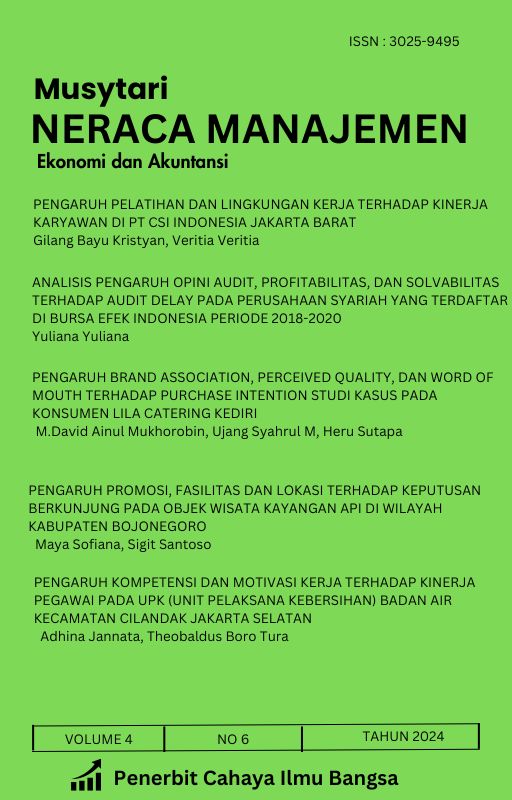Published 2025-06-15
Keywords
- job,
- order,
- costing,
- production,
- cost
- cost ,
- of,
- goods,
- manufactured,
- direct,
- materials,
- factory,
- overhead ...More
How to Cite
Abstract
This study aims to analyze production cost calculations using the job order costing method at Tobato Leather, a micro-enterprise in the leather handicraft sector. The production cost components analyzed include direct materials, direct labor, and factory overhead costs (FOH). The research method used is descriptive quantitative, with data obtained through observation, interviews, and documentation.The results show that the total production costs for three different orders are Rp9,277,218 (10 sheets), Rp3,534,064 (3 sheets), and Rp4,983,084 (5 sheets). After adding a 20% profit margin, the estimated selling prices are Rp11,132,662, Rp4,240,877, and Rp5,937,974 respectively. Thus, the selling prices per unit are Rp1,113,266, Rp1,413,625, and Rp1,187,594. These findings indicate that Tobato Leather gains a profit margin ranging from Rp363,226 to Rp663,625 per unit above the standard cost of Rp750,000. The company also has pricing flexibility for different strategies.The implementation of job order costing proves effective in delivering accurate cost information per order and supports managerial decision-making in cost control, production efficiency, and pricing strategy.
Keywords: Job Order Costing, Production Cost, Cost of Goods Manufactured, Direct Materials, Factory Overhead.
References
- Bustami, A., & Nurlela. (2013). Akuntansi Biaya: Metode Harga Pokok Pesanan dan Proses. Jakarta: Erlangga.
- Carter, W. K., & Usry, M. F. (2017). Ak untansi Biaya. Edisi ke-14. Jakarta: Salemba Empat.
- Garrison, R. H., Noreen, E. W., & Brewer, P. C. (2021). Akuntansi Manajerial. Jakarta: Salemba Empat.
- Hansen, D. R., & Mowen, M. M. (2015). Cost Management: Accounting and Control. 6th ed. United States: South-Western Cengage Learning.
- Mulyadi. (1999). Akuntansi Biaya. Edisi ke-5. Jakarta: Salemba Empat.
- Mulyadi. (2010). Akuntansi Biaya. Edisi Revisi. Jakarta: Salemba Empat.
- Wati, A. A., & Komala, A. R. (2021). Analisis Perhitungan Biaya Produksi UMKM dalam Perspektif SAK EMKM. Jurnal Ilmiah Akuntansi dan Bisnis, Vol. 7, No. 2, 101–110.Bustami, A., & Nurlela. (2013). Akuntansi Biaya: Metode Harga Pokok Pesanan dan Proses. Jakarta: Erlangga.
- Carter, W. K., & Usry, M. F. (2017). Akuntansi Biaya. Edisi ke-14. Jakarta: Salemba Empat.
- Garrison, R. H., Noreen, E. W., & Brewer, P. C. (2021). Akuntansi Manajerial. Jakarta: Salemba Empat.
- Hansen, D. R., & Mowen, M. M. (2015). Cost Management: Accounting and Control. 6th ed. United States: South-Western Cengage Learning.
- Mulyadi. (1999). Akuntansi Biaya. Edisi ke-5. Jakarta: Salemba Empat.
- Mulyadi. (2010). Akuntansi Biaya. Edisi Revisi. Jakarta: Salemba Empat.
- Wati, A. A., & Komala, A. R. (2021). Analisis Perhitungan Biaya Produksi UMKM dalam Perspektif SAK EMKM. Jurnal Ilmiah Akuntansi dan Bisnis, Vol. 7, No. 2, 101–110.

